Classic St Lucia Buns (Lussekatter)
Wednesday is St. Lucia Day, which means I spent my Sunday baking lussekatter, or Swedish saffron buns! Norwegians and Swedes traditionally bake these fluffy Santa Lucia buns for Saint Lucia’s Day, but they are delicious year round. And wow, they make my home smell so good. St. Lucia saffron buns are called lussekatter, or “Lucia’s cats” because they look like curled cat tails.
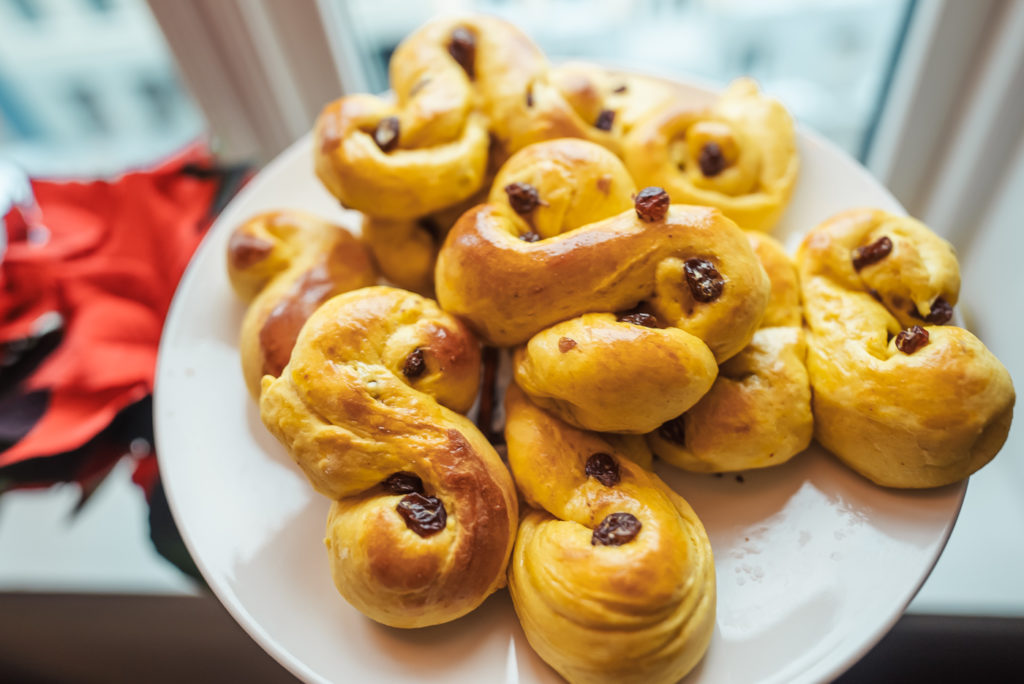
You can find all of my Scandinavian Christmas recipes here.
I’ve made these for years and I would say the key here is to add a bit of freshly ground cardamom to complement the saffron, and to make sure that you don’t over bake these, as then they can become too dry.
This recipe makes about 40 buns, but you can easily half it if you don’t want that many.
I’ve also shared a recipe for lussekatter filled with cardamom sugar here.
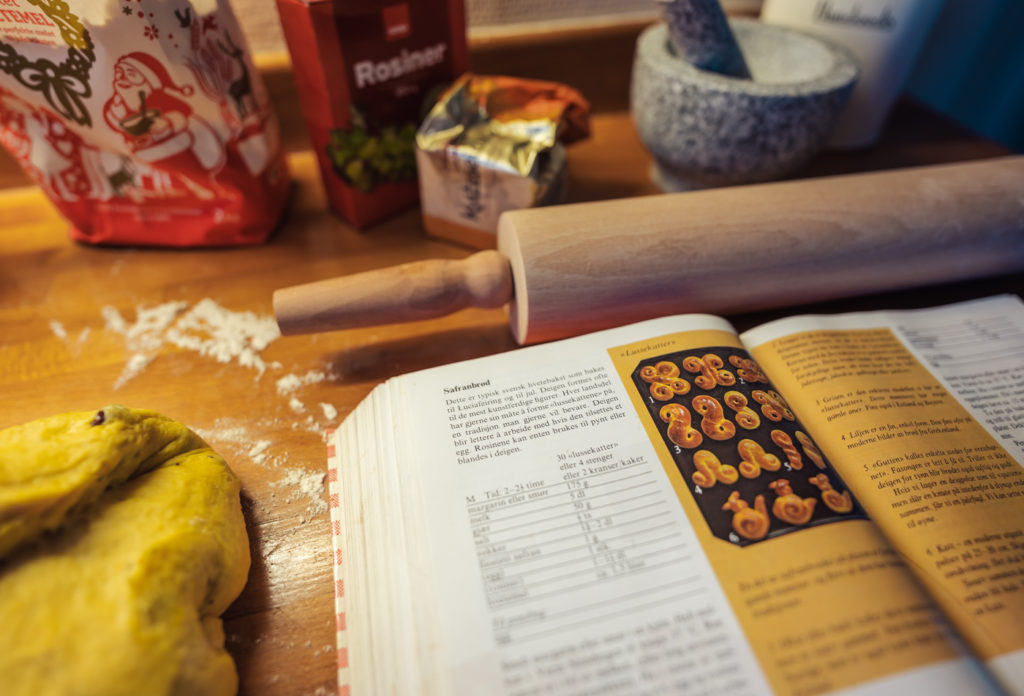
If you don’t have saffron or simply want to make St Lucia buns without saffron, you can use turmeric instead, to give the lussekatter their classic yellow color. Or some people choose to add turmeric on top of the saffron, to make the buns extra yellow. Saffron is also expensive, so you can save some money by using less saffron and adding a bit of turmeric as a substitute for saffron.
Some people also like to add raisins to the dough. I do this sometimes and personally I do prefer lussekatter with lots of raisins, while I know others prefer to only have a couple raisins on top of each bun.
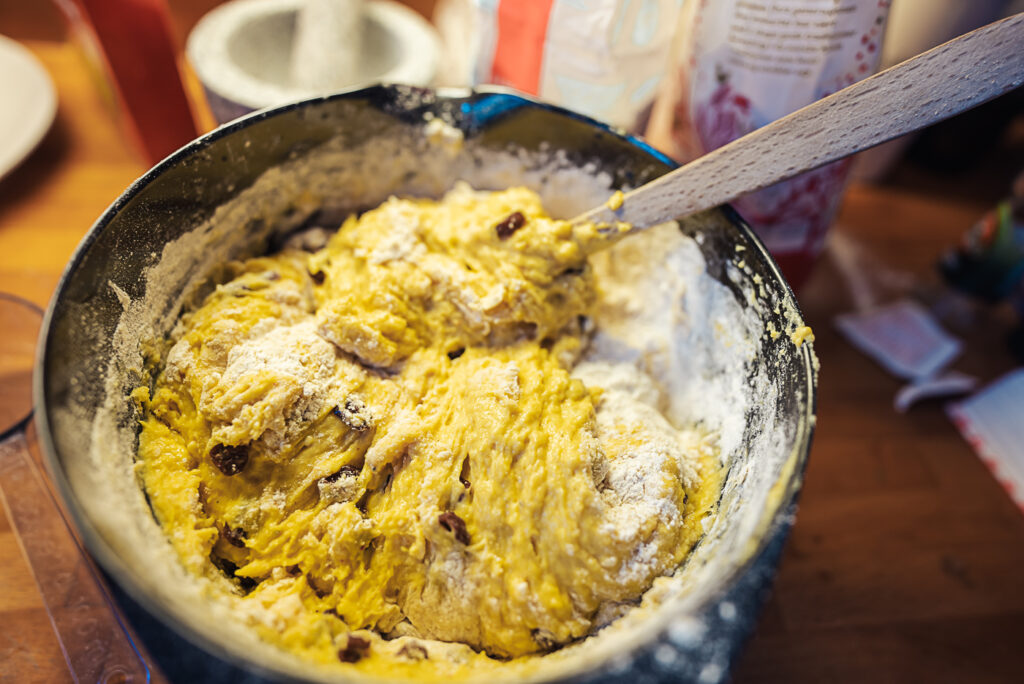
The dough will be quite sticky when you first mix it. After it rises for 30 minutes, you’ll knead it on a floured surface. If it’s still too sticky to knead you can add some more flour.
Then once the dough is kneaded you’ll divide it into four sections. Roll each section into a cylinder and then cut small slices.
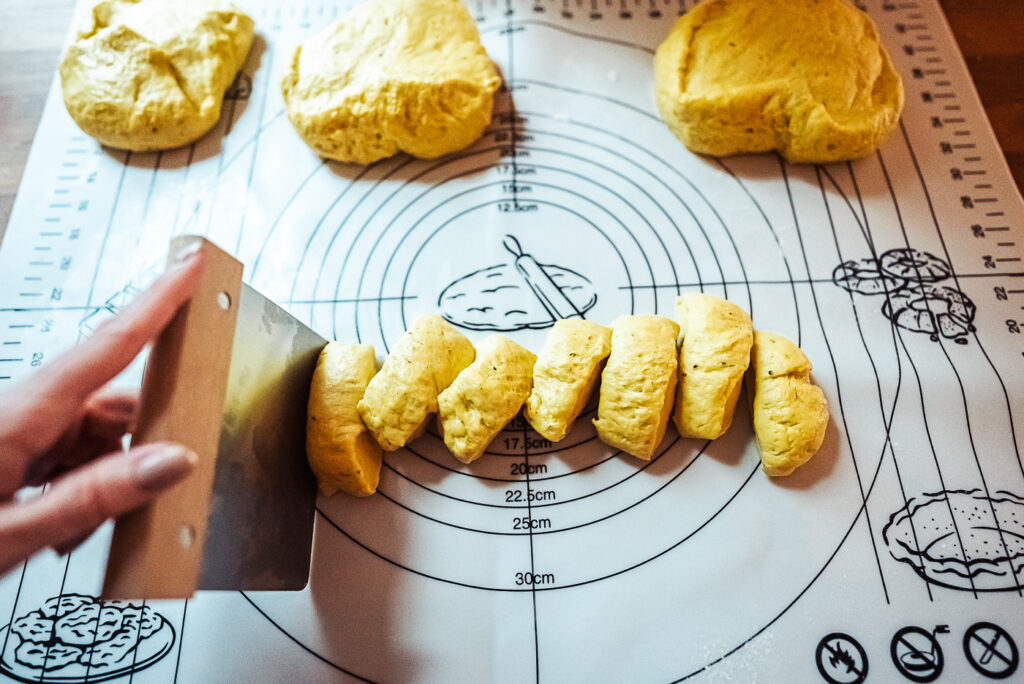
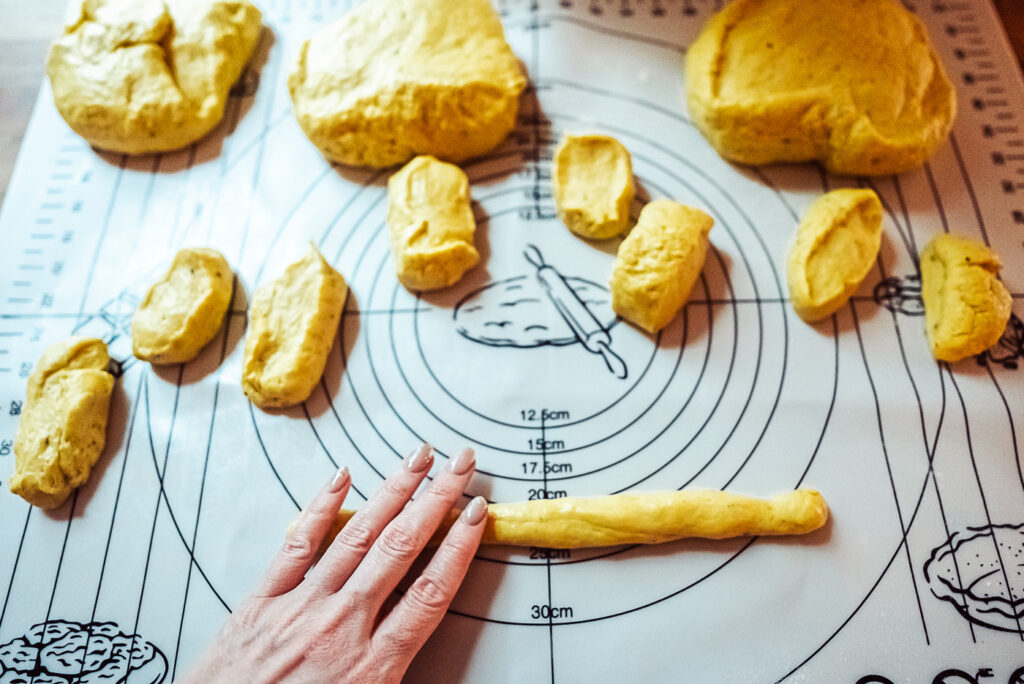
The most fun part of making St Lucia buns is all the different shapes!
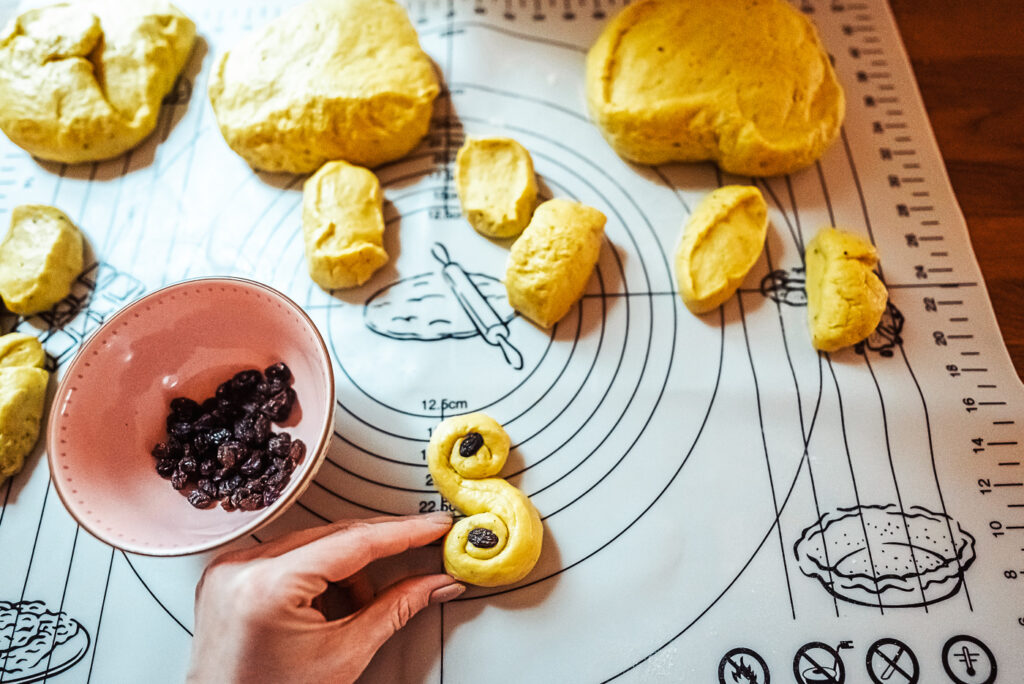
Norwegians use many different lussekatter shapes
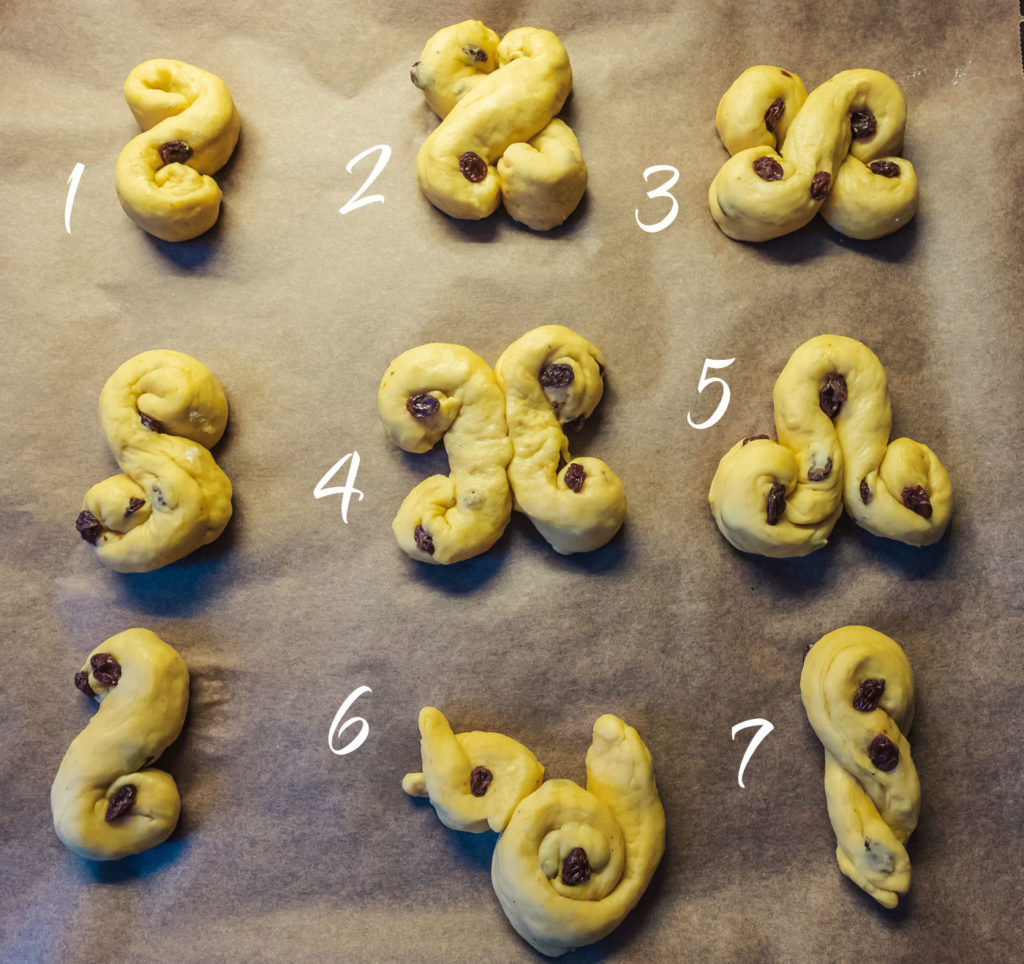
- The pig is the simplest shape, which has very old roots in Scandinavia and is also used in baking in Estonia and Bavaria.
- The bull is another shape with old roots, also used in Sweden and Estonia.
- This is an old symbol for the sun and has been used in Italy all the way back to the Iron Age. It also goes by a lot of other names including the Christmas wagon, Christmas bull, golden wagon, and Christmas cross.
- This is another version of the sun, with two pieces side by side instead of crossed.
- The lily is a simple shape, also used for bread in Greece.
- A modern version of the cat.
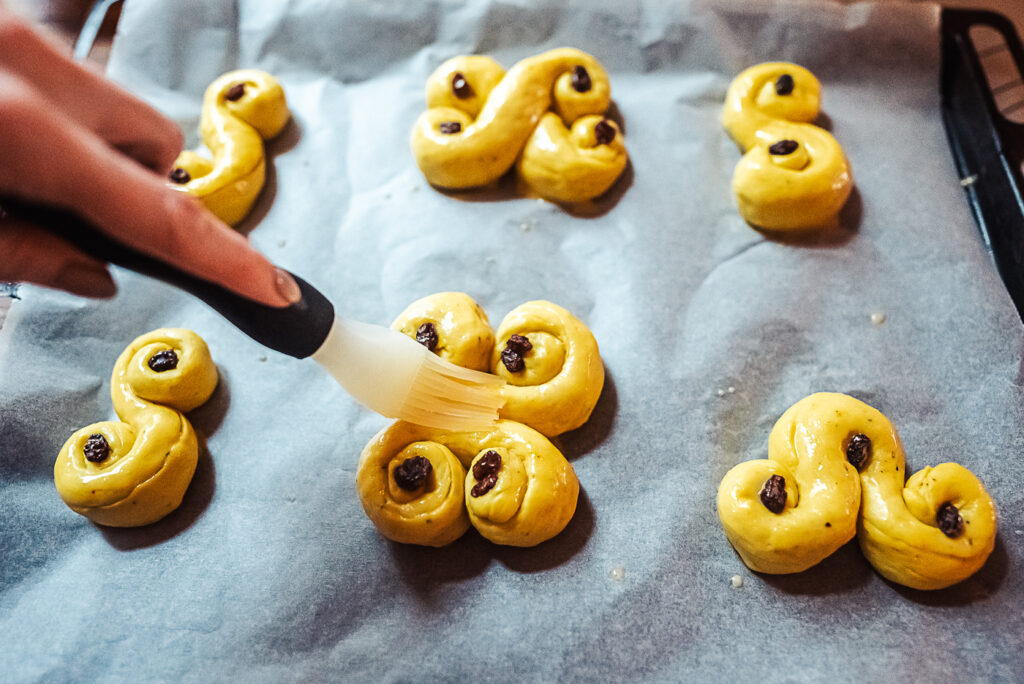
Be sure to space the lussekatter out on the baking sheet, as they’ll nearly double in size on the second rise.
I always start baking these for the shortest time and then test the first batch. If they’re underdone you can add a minute or two, but you definitely don’t want to bake these too long. I baked this batch for eight minutes, but the exact time will depend on your oven.
Lussekatter do dry out quickly, so I recommend freezing any that you aren’t planning to eat today. I will usually freeze most of them and then defrost one at a time as I want to eat them. Though I do have to admit that I make my way through these buns a lot more quickly than I usually anticipate. They are just so tasty!

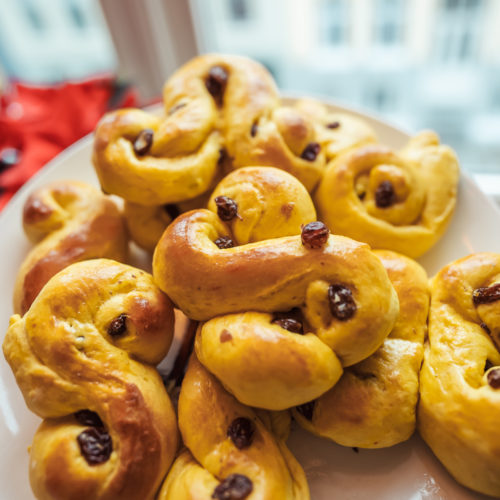
Classic St Lucia Buns (Lussekatter)
Ingredients
- 3/4 cup butter or margarine
- 2 cups milk
- 4 tsp instant yeast (or 50 g fresh yeast)
- 1/2 tsp salt
- 3/4 cup sugar
- 1/4 tsp saffron
- 1 tsp cardamom
- 1 egg
- 6 cups all purpose flour
- 1 dl raisins
- 1 egg (for egg wash)
Instructions
- Melt the butter in a saucepan on the stove. Add the milk. Let it cool until lukewarm.
- Pour the milk and butter mixture into a large mixing bowl and add fresh yeast, stirring until dissolved.
- Add the salt, sugar, saffron, cardamom, and egg, mixing thoroughly.
- Slowly add the flour while mixing continuously (you can do this with an electric mixer or by hand). The dough will still be quite sticky.
- Mix well until the dough pulls from the sides of the bowl (you don't actually need to knead the dough, just mix well). Cover and let the dough rise in a draft free place for about 30 minutes.
- Sprinkle flour on your counter and knead the dough well. You may need to add extra flour if the dough is too sticky to knead. Cut the dough into four sections and roll each into a cylinder. Cut strips out of the cylinder about the size of two fingers. Roll the strips out and form into lussekatter shapes. Add raisins as decoration.
- Set the formed lussekatter on a greased baking pan, or on baking paper. Cover and let rise until they are doubled in size – about 30 minutes.
- Preheat oven to 435°F (225°C).
- Brush each bun with whisked egg. Bake for 7 – 10 minutes, until golden brown on top.

5 Comments
Ingrid
December 12, 2023 at 10:43 am
My friend who studied in Sweden made lussekatter for me last year! These look very delicious!
Sarita
December 14, 2023 at 2:45 pm
What a fantastic, classic recipe! I skipped the saffron (don’t care for it) and added a 1/4 tsp of turmeric for color. The fresh cardamon really lifted the flavor and the dough was delicious! My oven runs hot so I baked them for 10 minutes at 400 F and it was perfect. This is a keeper!
Sandra
December 13, 2024 at 1:34 am
Thanks for sharing this recipe! I crushed my saffron and dissolved it in the warm milk before adding the yeast. I love the way they turned out – well-risen, fragrant, just a touch of sweetness. I made the full recipe (40 rolls) and shared them at work and at yoga class. I will have to make them again next year!
becky
December 25, 2024 at 9:26 pm
Thank you for sharing your tips! We want to celebrate our Norwegian heritage at Christmas and this is a perfect link to the Christmas traditions of our ancestors. These kinds of activities keep our children grounded in a chaotic world. The details you suggested make us more confident to try it.
Jill Wilson
December 31, 2024 at 11:52 pm
I made these for my daughter, Elizabeth, who loves everything Norwegian. They were delicious!
I will use whole cardamom next time.